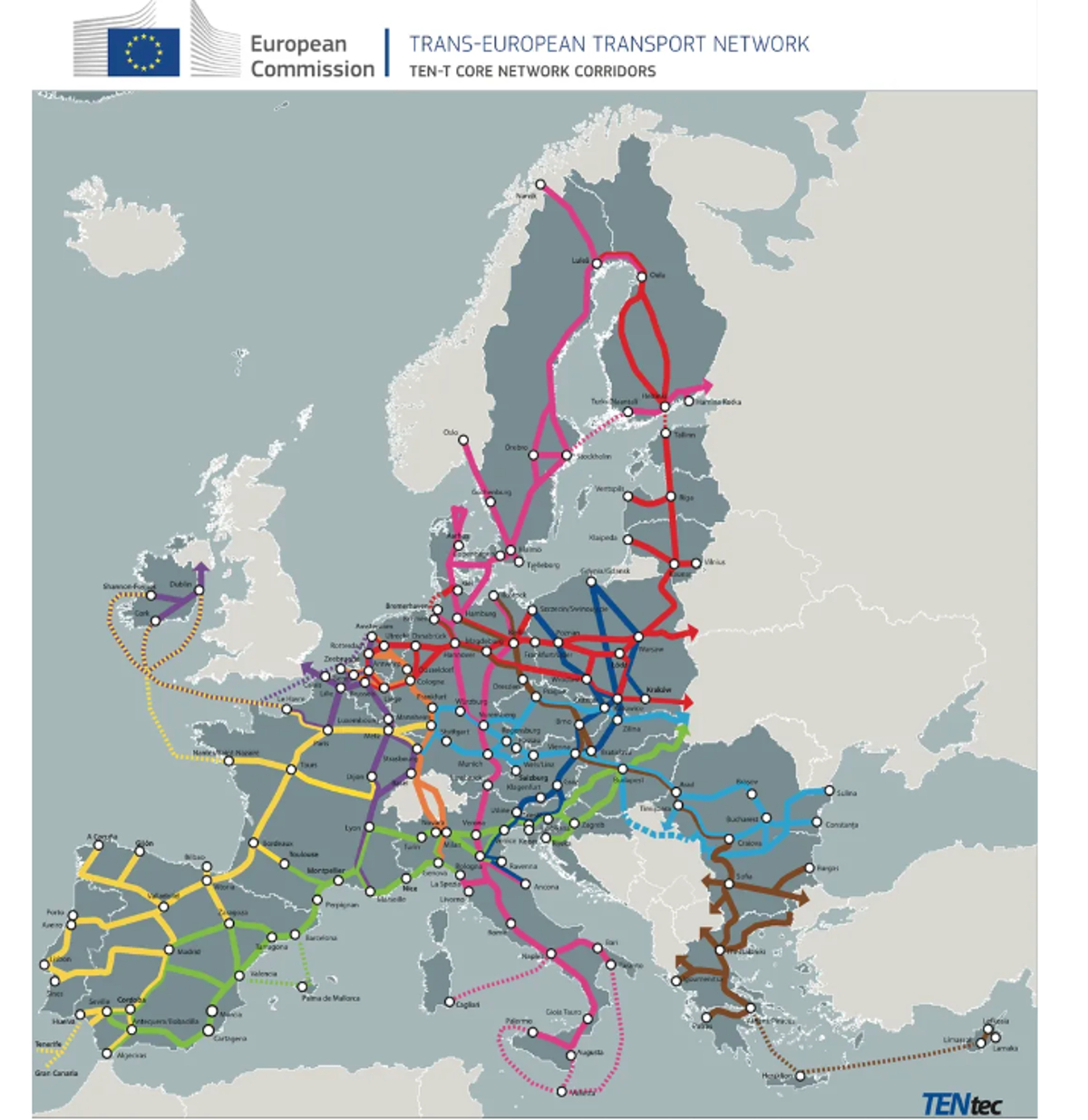
The European Union has approved a new rules package for EV fast charging that requires there be a facility with at least 150 kW of power along all major transportation routes every 60 kilometers (37 miles) by 2025. According to The Verge, the new rules are intended to benefit EV drivers in three ways:
- reduce range anxiety by expanding the EV charging infrastructure along Europe’s main highways
- make payments at charging easier without requiring an app or subscription
- ensure pricing and availability is clearly communicated to avoid surprises.
By the end of December 2025, each charging location needs to have at least 400 kW of total output with at least one 150 kW charger available. By December 31, 2027, the regulations require at least 600 kW of total output with at least one 150 kW charger. Some charging stations today are listed as having 150 kW of power, but have two charging cables. If two cars are using the charger at the same time, the total power is cut in half. The new rules require at least one charger with a minimum capacity of 150 kW at all times.
Europe has what it calls its Trans-European Transportation (TEN-T) network of highways, which are equivalent to the interstate highway system in the US. But there is also a network of feeder roads that connect to it. The same new rules will apply to 50% of those lesser roads starting in 2027. The buildout of EV fast charging stations along all those roads is to be completed by 2030. By 2035, all of them must have a total capacity of 600 kW per charging location.
The requirement that these fast charging locations operate the same as gasoline and diesel fueling stations — pull up, plug in, tap or insert a credit card, charge, then go — is an essential part of the European EV fast charging scheme. Operators are required to clearly show prices at their installed recharging points via “electronic means,” including wait times and availability.
Today, drivers may be required to have a welter of charging company credentials and special payment cards. It’s slow, frustrating, and confusing — aspects of EV charging that need to be eliminated if the EV revolution in Europe is to move forward.
EU Fast Charging For Trucks, Ships, & Planes
In addition to covering owners of electric cars and vans, the regulations also have deployment targets for recharging heavy-duty electric vehicles and address maritime ports and airports, as well as hydrogen refueling for both cars and trucks. Here are the details for transportation other than cars:
- Charging stations for heavy-duty EVs with a minimum output of 350kW must be deployed every 60 km along the TEN-T core network, and every 100 km (62 miles) on the larger TEN-T network from 2025 onward. This must be followed by complete network coverage by 2030.
- Hydrogen refueling stations serving cars and trucks must be deployed in all urban areas and every 200 km along the TEN-T core network from 2030 onward.
- Maritime ports welcoming a minimum number of large passenger vessels, or container vessels, must provide them with shore-side electricity by 2030.
- Airports must provide electricity to stationary aircraft at all gates by 2025, and at all remote stands by 2030.
The new rules package is part of the “Fit for 55” initiative meant to help the EU reach its goal of reducing greenhouse emissions by 55 percent before 2030 compared to 1990 levels and to achieve climate neutrality by 2050. Transportation is said to be responsible for 25 percent of EU greenhouse gas emissions, with 71 percent of that coming from road use.
“The new law is a milestone of our ‘Fit for 55’ policy providing for more public recharging capacity on the streets in cities and along the motorways across Europe,” said Raquel Sánchez Jiménez, Spain’s minister of transport, mobility, and urban agenda, in a press release. “We are optimistic that in the near future, citizens will be able to charge their electric cars as easily as they do today in traditional petrol stations.”
The Takeaway
The announcement of the new law and rules package does not make it clear who is to pay for all these EV fast charging upgrades. Presumably, the EU is offering funding to make these goals possible, much like the money provided by the federal government in the US.
Tesla already makes some of its Supercharger fast chargers available to all drivers, especially in the Netherlands, but drivers need to have an account with Tesla to use them. The ability to pay for charging quickly and seamlessly is a huge step forward and may be more important than whether it takes 20 minutes or 30 minutes to charge to 80% during a rest stop.
The US regulations include similar provisions, the better to ease the minds of EV drivers when traveling away from home. Of course, everyone would like to see these installations completed sooner, but if the goals are reached on time, that will be a huge step forward for EV fast charging in Europe.
I don’t like paywalls. You don’t like paywalls. Who likes paywalls? Here at CleanTechnica, we implemented a limited paywall for a while, but it always felt wrong — and it was always tough to decide what we should put behind there. In theory, your most exclusive and best content goes behind a paywall. But then fewer people read it! We just don’t like paywalls, and so we’ve decided to ditch ours. Unfortunately, the media business is still a tough, cut-throat business with tiny margins. It’s a never-ending Olympic challenge to stay above water or even perhaps — gasp — grow. So …





